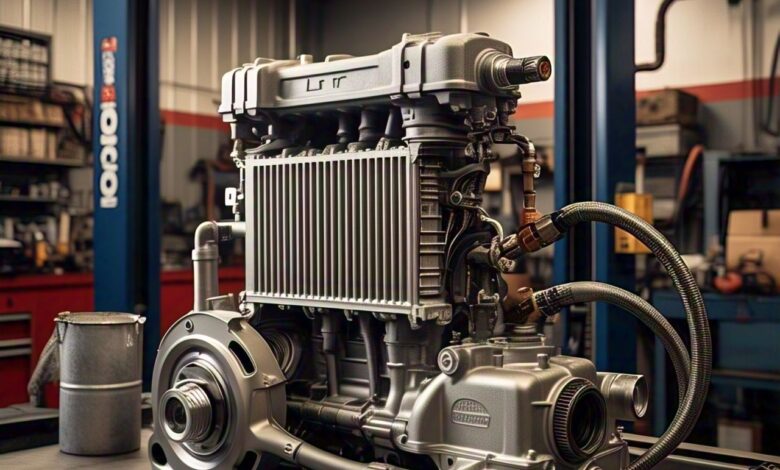Complete Guide to the 192-97 LT1 Cooling System: Keep Your Engine Running Smooth

The 192-97 LT1 cooling system is a crucial part of your vehicle’s engine performance. Without a properly working cooling system, your engine could overheat, causing serious damage. If you’re looking to keep your engine in top condition, understanding how the 192-97 LT1 cooling system works is essential. This system is designed to maintain the ideal temperature for your engine, ensuring it runs efficiently for long periods.
In this guide, we’ll walk you through everything you need to know about the 192-97 LT1 cooling system. From its components to common issues and maintenance tips, we will help you ensure that your engine stays cool and performs at its best. Whether you’re a car enthusiast or a new owner, this guide will give you all the basics you need to know.
What is the 192-97 LT1 Cooling System? A Simple Overview
The 192-97 LT1 cooling system is an important part of your car’s engine. It helps to control the temperature of the engine, preventing it from getting too hot. If the engine becomes too hot, it could cause serious damage and might even stop working. The cooling system works by circulating coolant through the engine, where it absorbs heat, and then releases it through the radiator.
This system includes several parts, including the water pump, thermostat, radiator, and hoses. All these parts work together to keep the engine cool. The coolant is a special liquid that can carry heat away from the engine and release it outside. Without this system, your car’s engine could overheat, leading to breakdowns and costly repairs.
How Does the 192-97 LT1 Cooling System Keep Your Engine Safe?
The 192-97 LT1 cooling system is like a safety shield for your engine. When the engine starts running, it creates heat. If this heat is not controlled, it can cause parts to wear out quickly. The cooling system absorbs the heat, prevents the engine from getting too hot, and makes sure the engine continues to run smoothly.
The system works in a cycle. First, the coolant is pumped through the engine, picking up heat. It then travels to the radiator, where it cools down before going back into the engine. This cycle repeats constantly, ensuring that the engine stays at the correct temperature. Without this cooling process, your car’s engine could easily overheat and break down.
Key Components of the 192-97 LT1 Cooling System Explained
The 192-97 LT1 cooling system has several key parts that work together. Let’s break down the most important ones.
Key Components:
- Water Pump: This pump moves coolant through the engine, ensuring it circulates to absorb heat.
- Radiator: The radiator releases the heat that the coolant picks up from the engine.
- Thermostat: This part controls the temperature by regulating when the coolant flows through the engine.
- Coolant: A special fluid that moves heat away from the engine and prevents it from overheating.
Each of these parts plays an important role in keeping the engine at the right temperature and preventing damage. It’s crucial to maintain them properly to keep the 192-97 LT1 cooling system working efficiently.
Common Problems with the 192-97 LT1 Cooling System and How to Fix Them
The 192-97 LT1 cooling system is reliable, but it can experience problems over time. Here are some common issues:
Common Problems:
- Leaking Hoses: Sometimes the hoses that carry coolant can crack and leak. This can cause the engine to lose coolant, which may lead to overheating.
- Broken Water Pump: If the water pump fails, the coolant won’t circulate, and the engine could overheat quickly.
- Clogged Radiator: Dirt and debris can clog the radiator, making it less effective at cooling the engine.
If you notice any of these problems, it’s important to address them as soon as possible. Regular inspections and maintenance can help prevent these issues from becoming serious.
Why Regular Maintenance of the 192-97 LT1 Cooling System is Important
Regular maintenance of the 192-97 LT1 cooling system is essential for keeping your engine in good shape. Over time, coolant can break down and lose its ability to cool the engine properly. Changing the coolant and checking the system regularly ensures that your engine is always running at the right temperature.
During maintenance, it’s important to check the hoses for wear and tear, inspect the radiator for blockages, and make sure the thermostat is functioning correctly. By staying on top of maintenance, you can prevent most cooling system issues and avoid expensive repairs down the line.
How to Maintain Your 192-97 LT1 Cooling System for Longevity
Maintaining your 192-97 LT1 cooling system is simple if you follow a few basic steps. Here are some maintenance tips to keep the system running smoothly:
Maintenance Tips:
- Check Coolant Levels Regularly: Ensure that the coolant level is always within the recommended range.
- Replace Coolant as Needed: Coolant can break down over time. Change it according to your vehicle’s manufacturer recommendations.
- Inspect the Radiator: Clean the radiator and ensure that there is no dirt or debris blocking airflow.
By following these tips, you can help extend the life of your engine and avoid costly cooling system repairs.
Troubleshooting the 192-97 LT1 Cooling System: Signs Your Engine Needs Attention
If you notice certain signs, your 192-97 LT1 cooling system might need attention. Here are some common symptoms:
- Overheating Engine: If your engine temperature gauge shows high readings, it could be a sign that the cooling system isn’t working correctly.
- Coolant Leaks: If you see coolant under the car, this might mean there’s a leak in the system.
- Strange Noises: A noisy water pump or radiator fan could signal an issue with the cooling system.
If you experience any of these problems, it’s important to have your cooling system checked right away to prevent engine damage.
Upgrading Your 192-97 LT1 Cooling System: Is it Necessary?
Upgrading your 192-97 LT1 cooling system can be a good idea if you’re looking for better performance. If you drive your car in hot climates or do a lot of towing, an upgraded cooling system can help keep your engine at the perfect temperature.
Upgrades can include a larger radiator, a higher-flow water pump, or a more efficient fan. These upgrades can increase the cooling capacity of your system and reduce the risk of overheating. However, it’s important to ensure that any upgrades are compatible with your vehicle to avoid issues.
Conclusion
Maintaining your 192-97 LT1 cooling system is essential for keeping your engine running smoothly. A well-functioning cooling system prevents your engine from overheating, which can cause costly damage. Regular maintenance, such as checking coolant levels, replacing old coolant, and inspecting parts like the radiator and hoses, will keep your engine in great shape for years to come.
If you ever notice any signs of problems with your cooling system, like overheating or coolant leaks, it’s important to take action quickly. By staying on top of maintenance and addressing issues early, you can ensure that your 192-97 LT1 cooling system continues to do its job and helps keep your engine safe.
FAQs
Q: What is the purpose of the 192-97 LT1 cooling system?
A: The cooling system helps keep your engine at the right temperature by removing heat. Without it, the engine could overheat and get damaged.
Q: How often should I check the coolant in my 192-97 LT1 cooling system?
A: You should check the coolant level regularly, ideally every few months, to ensure it’s at the right level for proper cooling.
Q: Can I drive with a leaking cooling system?
A: No, driving with a coolant leak can cause the engine to overheat, which could lead to severe damage. It’s important to fix the leak as soon as possible.
Q: What are signs that my 192-97 LT1 cooling system needs attention?
A: If you notice your engine temperature is too high, coolant leaks, or strange noises from the cooling system, it might need attention.
Q: How do I maintain my 192-97 LT1 cooling system?
A: Regularly check coolant levels, inspect hoses and the radiator for leaks or blockages, and replace old coolant to keep the system in good condition.




